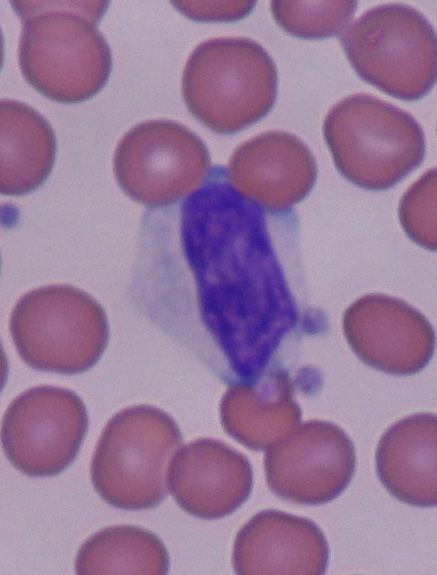 | ||
Reactive lymphocytes or variant lymphocytes are cytotoxic (CD8+) lymphocytes that become large as a result of antigen stimulation. Typically, they can be more than 30 µm in diameter with varying size and shape.
The nucleus of a reactive lymphocyte can be round, elliptic, indented, cleft, or folded. The cytoplasm is often abundant and can be basophilic. Vacuoles and/or azurophilic granules are also sometimes present. Most often, the cytoplasm is gray, pale blue, or deep blue in colour.
The distinctive cell associated with EBV or CMV is known as a "Downey cell", after Hal Downey, who contributed to the characterization of it in 1923.
Causes
Reactive lymphocytes are usually associated with viral illnesses, but they can also be present as a result of drug reactions (such as phenytoin), immunizations, radiation, and hormonal causes (such as stress and Addison's disease), as well as some autoimmune disorders (such as rheumatoid arthritis).
Some pathogen-related causes include:
